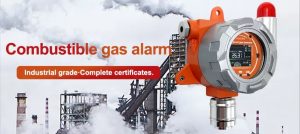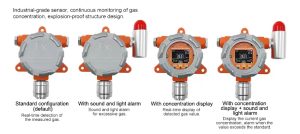As concerns about air pollution and its impact on human health and the environment continue to rise, the need for effective air quality management becomes increasingly pressing. To address this challenge, advances in gas sensor technology are playing a crucial role in monitoring and managing air quality in a more efficient and accurate manner.

Gas sensors are essential tools used to detect and measure the presence of various gases in the atmosphere. Traditionally, gas sensors were limited in their capabilities and could only detect a certain range of gases. However, recent advancements in gas sensor technology have transformed the field, opening up new possibilities for air quality management.
One of the significant breakthroughs in gas sensor technology is the development of highly sensitive and selective sensors. These sensors utilize advanced materials, such as nanomaterials or metal-organic frameworks, which offer enhanced detection capabilities. They can detect even trace amounts of pollutants and distinguish between different types of gases, providing detailed and accurate information about air quality.
Additionally, miniaturization has played a crucial role in advancing gas sensor technology. Miniature gas sensors are now smaller and more portable than ever before, allowing for easy deployment in various environments. They can be integrated into wearable devices or installed in fixed monitoring stations, providing real-time data on air quality in different locations. This improved portability enables more widespread and comprehensive monitoring of air pollution, facilitating targeted mitigation measures.
Moreover, the integration of wireless connectivity and internet of things (IoT) capabilities has revolutionized air quality management. Gas sensors equipped with wireless technology can transmit data in real-time to central monitoring systems. This connectivity enables continuous monitoring of air quality, allowing for prompt identification of pollution hotspots or changes in pollutant levels. With IoT integration, these sensors can also interact with other devices and systems, such as weather monitoring stations or air purification systems, creating a comprehensive network for air quality management.
Artificial intelligence (AI) and machine learning algorithms have also made significant contributions to gas sensor technology. These algorithms can analyze vast amounts of data collected by gas sensors and identify patterns or trends in air quality. They can detect anomalies, predict future pollutant levels, and provide insights for informed decision-making. AI-powered gas sensor systems can optimize the allocation of resources and facilitate targeted interventions to improve air quality effectively.
Furthermore, advances in gas sensor technology have led to the development of low-cost sensors that are accessible to a broader range of users.
These sensors offer a cost-effective solution for monitoring air quality, making it possible for individuals, communities, and even developing countries to participate in air quality management efforts. This democratization of gas sensor technology empowers more stakeholders to take action towards mitigating air pollution and promoting healthier environments.

In conclusion, the future of air quality management relies on the continuous advancements in gas sensor technology.
Highly sensitive and selective sensors, miniaturization, wireless connectivity, AI integration, and low-cost solutions are transforming the field of air quality monitoring and management. With these advancements, air pollution can be monitored more comprehensively and accurately, enabling prompt interventions and informed decision-making. By harnessing the power of gas sensor technology, we can work towards a cleaner and healthier future for ourselves and generations to come.
 : +86 155 8830 2704
: +86 155 8830 2704 : jxdziot@gmail.com
: jxdziot@gmail.com
